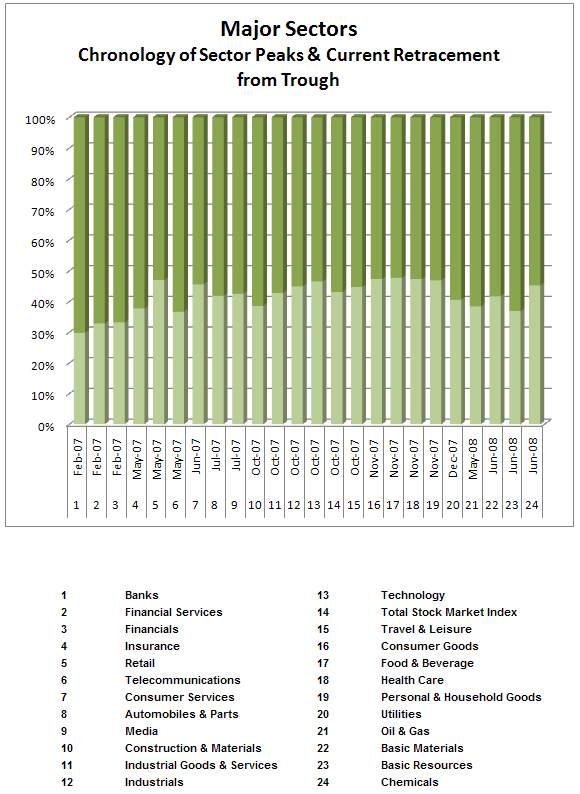
I've many books in my bookshelf that beg reading, none more compelling than Brian Greene's, The Fabric of the Cosmos: Space. Time. And the Texture of Reality. Greene is a theoretical theorist--a mind that dwells in the stratosphere of conceptual thought.
Greene is that wonderful composite of rocket scientist and gifted writer, making his work accessible to mere mortals. Rather than reading equations, such as this. . . .
 (Photo courtesy Wikipedia)
(Photo courtesy Wikipedia). . . I'm blessedly spared both the headache of trying to hum along with some
lip mumbling--even spurts of drooling --and the shame of having to admit that
I've not understood a thing. Rather, I simply need to read one of his
beautifully crafted books.
There was a terrific blog post by Gmak, a fellow Slope of Hope blogger, regarding technical analysis. It engendered a very good discussion. I was particularly happy to see it as I had become cross eyed looking at a number of charts whose ultimate destination seemed unfathomable (like our drawing above). "Now what does any of this have to do with trading?" you might ask impatiently (is that your toe I hear tapping? ).
I ran across two passages in this book that I wanted to share.

The second I wanted to commit to a post, because I thought that is was
something worth reading. I quote from page 11.
But according to the quantum laws, even if you make the most perfect
measurements possible of how things are today, the best you can ever hope to do
is predict the probability that things will be one way or another at some chosen time in the future, or that things were one way or another at some chosen time in the past. The universe, according to quantum mechanics, is not etched into the present; the universe, according to quantum mechanics, participates in a game of chance.
. . . most physicists agree that probability is deeply woven in to the fabricof quantum reality. Whereas human intuition, and its embodiment in classical physics, envision a reality in which things are always definitely one way or another, quantum mechanics describes a reality in which things sometimes hover in a haze of being partly one way and partly another. Things become definite only when a suitable observation forces them to relinquish quantum possibilities and settle on a specific outcome. The outcome that's realized, though, cannot be predicted--we can predict only the odds that things will turn out one way or the other. (p.11)
Running across this passage so quick on the heels of our having a
conversation about TA and its 'predictive' abilities, made it resonate deeply. I
could not help but note that trading/TA is not so far from quantum mechanics.
When your capital is on the line, probabilities must be considered carefully--and none more judiciously than the probability of your being wrong in a trade. As our trading is fraught with our successfully managing (surviving) uncertainty, I thought the passage timely and insightful.
Our technical analysis, for all of its purported faults, is a construct that gives us understanding and cultivates insight. More importantly, our TA and our trading plan anchors those insights. It is not predictive, but it does reveal to us the promise of certain outcomes. To those promises we must overlay our trading discipline. We are not really trying to managed the outcome of a chart, rather we are managing the outcome of the relationship of our trading capital with the chart. Accordingly, our trading discipline is the construct of that universe of uncertainty. Most importantly, we are the final arbiter of those rules those rules dictate the outcomes. That is great power, is it not?
We really are masters of our own universe.














